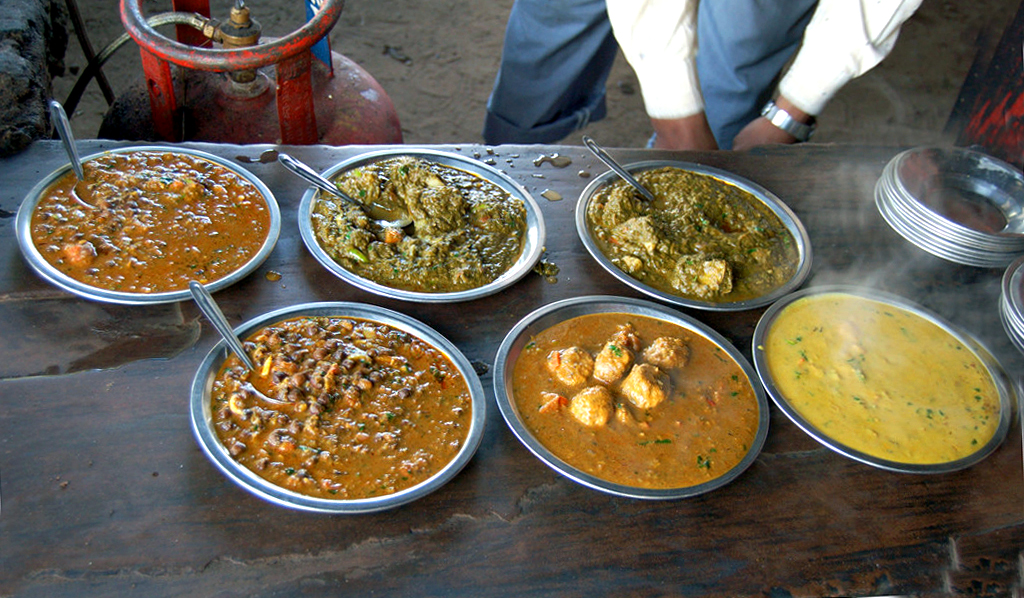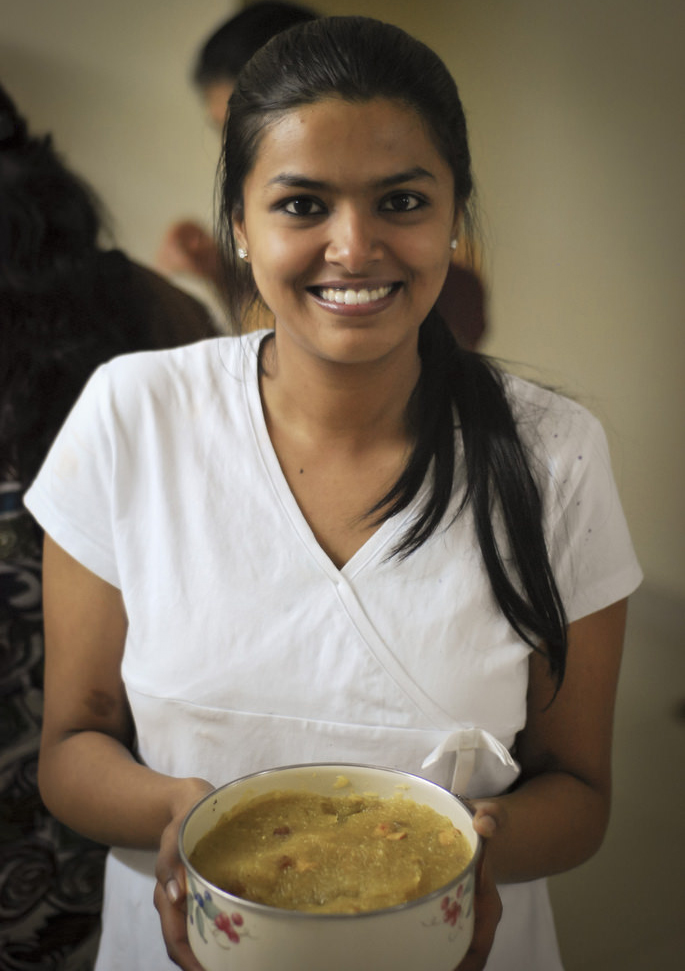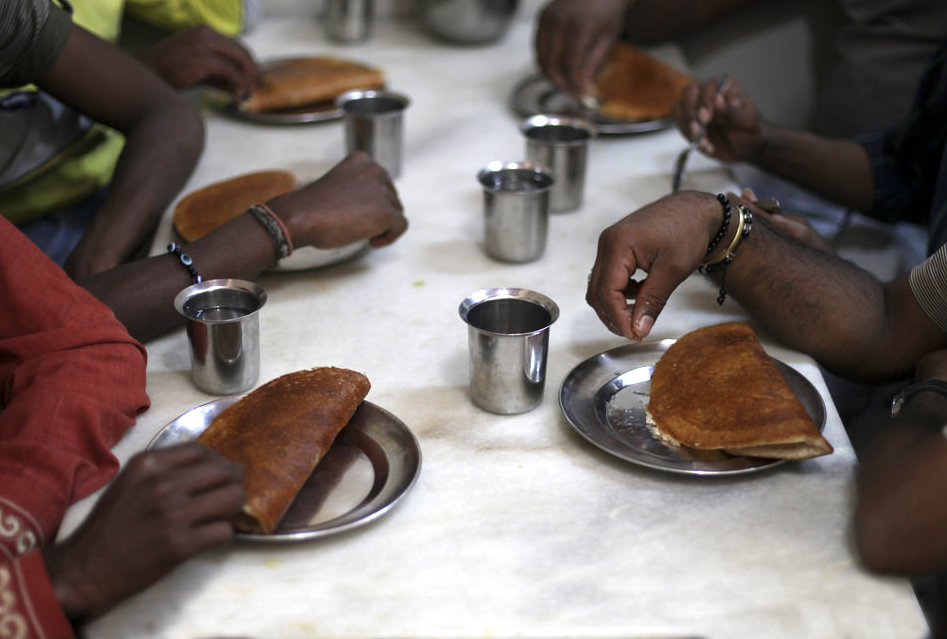Food and Drink: Dining Etiquette
Table Etiquette
In households throughout India, it is common to eat at a low table, seated on a cushion or short stool, or at a Western-style table with chairs. Hands are the primary utensil during meals, and they are washed before and after every meal. The left hand—which is associated with bathroom hygiene and feet—is never used to touch food or to point at others.
Place settings often include a clean banana leaf or a large plate. Meals are served communally, and include a variety of dishes, most of which are typically vegetarian. Indians serve themselves from communal dishes with a spoon. Unless dining with close family, friends, or a partner, Indians carefully avoid contaminating other people’s food with their saliva, an offense known as jutha. Where rice is common, wetter foods are mixed with individual servings of rice so that they can be easily scooped with one's fingers. Where flatbread is used, pieces of bread are ripped off—using only the fingers of the right hand—and used to pick up food, thus avoiding touching the wet food as much as possible. When using banana leaves, Indians signal being finished by folding their leaf toward themselves—folding it in the opposite direction can indicate distaste or dissatisfaction with the meal. Indians do not say “thank you” at the end of a meal, as this is considered overly formal and suggests that the gesture of a good meal was unexpected, as if the diner and host were distant acquaintances or even strangers. Instead, Indians compliment the food to show appreciation, and perhaps offer to host a dinner in the future.
Social Dimension of Dining
Guests sometimes bring gifts for the host and the hosts’ children when invited to dinner parties, but only a small, inexpensive token, such as sweets. Dinner parties generally begin 15 to 30 minutes later than stated. Depending on the occasion, the guest of honor may be given a garland of flowers to wear around his or her neck, but it is usually removed after a few minutes in a show of humility. Food is typically served first to the guest of honor, then to men, women, and children. Women typically serve men and then themselves. Hosts will usually offer diners more of a dish, to make sure that they are satisfied; Hindu hosts, specifically, are never supposed to let guests’ plates go empty.
Article written for World Trade Press by Christine Kiilerich.
Copyright © 1993—2025 World Trade Press. All rights reserved.

 India
India 

